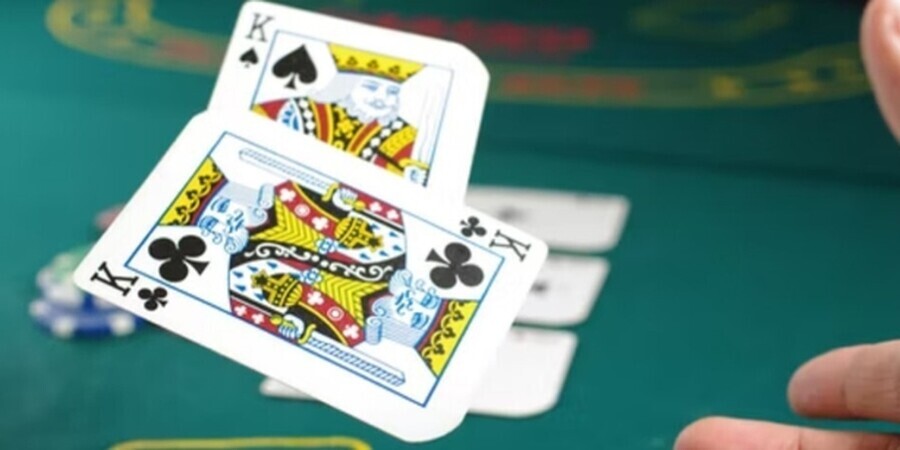Philadelphia, PA - The game of blackjack, with its blend of skill, strategy, and luck, offers a fascinating arena for applying probability theory. While the allure of online blackjack is undeniable, achieving success requires more than just luck. This article delves into how the principles of probability can be applied to online blackjack, transforming theoretical knowledge into a tangible edge over the house. Understanding the mathematics behind the game can significantly improve decision-making processes, ultimately leading to more informed and, hopefully, more profitable outcomes.
The Basics of Blackjack Probability
Understanding the Deck
At its core, blackjack probability begins with the composition of the deck. A standard deck contains 52 cards: 13 ranks across four suits. The probability of drawing a specific card, say an Ace, is initially 4 out of 52, or 1 in 13. As cards are dealt, the deck's composition changes, altering these probabilities. Recognizing these shifting odds is crucial for making strategic decisions in real time. This concept, known as deck penetration, becomes more pronounced in games with fewer decks.
Calculating Outcomes
The beauty of blackjack lies in its simplicity and the finite nature of its outcomes. The goal is to reach a hand value as close to 21 without going over. The probability of busting (exceeding 21) depends on the current hand value and the distribution of remaining cards in the deck. For instance, if your hand totals 12, the probability of drawing a 10-value card (10, J, Q, K) and busting is significantly lower than if your hand totals 16. By understanding these dynamics, players can make more informed decisions on when to hit, stand, or double down.
Advanced Probability Techniques
Card Counting Strategies
Card counting is a technique that leverages probability theory to track the ratio of high cards to low cards remaining in the deck.
High cards (10s and Aces) benefit the player, increasing the chances of hitting blackjack and making favorable betting adjustments. Conversely, an excess of low cards favors the dealer. By assigning values to different card groups (e.g., +1 for 2-6, 0 for 7-9, and -1 for 10-Ace), players can maintain a running count to gauge the deck's composition. This technique requires practice but can tilt the odds in the player's favor.
The Importance of Deck Penetration
Deck penetration refers to the percentage of cards dealt before the deck is reshuffled. It plays a pivotal role in the effectiveness of card-counting strategies. The deeper the penetration, the more reliable the count, and, consequently, the stronger the player’s ability to make accurate predictions. Online blackjack variants with higher deck penetration rates offer a more fertile ground for applying these advanced probability techniques, though players must be aware of variations in rules and deck shuffling practices.
Practical Application in Online Blackjack
Choosing the Right Game
Not all online blackjack games are created equal. Variants differ in rules, number of decks used, and shuffling practices, all of which impact the house edge and the applicability of probability-based strategies. For instance, games that offer 3:2 payouts for blackjack versus 6:5 significantly affect expected returns. Players should seek out games with fewer decks, favorable rules (such as the dealer standing on Soft 17), and high deck penetration to maximize their strategic advantage.
Adjusting Strategy Based on Probabilities
- Applying probability lessons to online blackjack involves more than just memorizing strategies; it requires dynamic adjustment based on the game's evolving state. For example:
- Increasing bet sizes can be advantageous if the running count is high (indicating an abundance of high cards).
- In contrast, a low count suggests caution, with smaller bets and more conservative play.
- The current count and perceived deck composition should also inform decisions on insurance bets, splits, and doubles.
Conclusion
Applying probability theory in online blackjack sites is not about guaranteeing wins; it’s about making smarter decisions that increase the likelihood of success over time. Players can significantly reduce the house edge by understanding the basics of probability, mastering advanced techniques like card counting, and choosing the right online games.
This strategic approach, rooted in the mathematical underpinnings of the game, transforms theoretical knowledge into a practical toolkit for navigating the online blackjack landscape with greater confidence and skill.
Remember, the key to leveraging probability in blackjack lies not in predicting outcomes with certainty but in shifting the odds slightly in your favor, turning a game of chance into one of calculated risk and reward.


